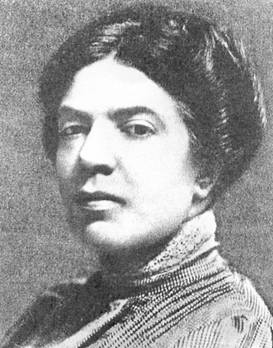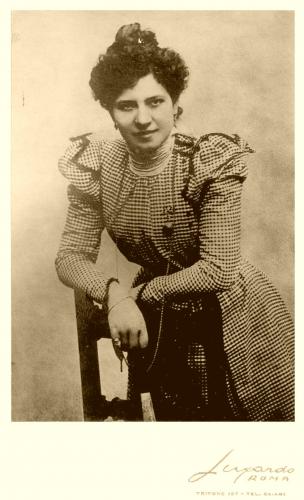<Back to Index>
- Mathematician James Hardy Wilkinson, 1919
- Writer Grazia Deledda, 1871
- Emperor of Mexico Augustín Cosme Damián de Iturbide y Aramburu, 1783
PAGE SPONSOR



Grazia Deledda (September 27, 1871 — August 15, 1936) was an Italian writer whose works won her the Nobel Prize for Literature in 1926.
Born in Nuoro, into a bourgeois family, she attended elementary school and then was educated by a private tutor (a guest of one of her relatives) and moved on to study literature on her own.
She first published some novels on the magazine L'ultima moda when it still published works in prose and poetry. Nell' azzurro, published by Trevisani in 1890 might be considered as her first work.
Still between prose and poetry are, among the first works, Paesaggi sardi, published by Speirani in 1896. In 1900, after having married Palmiro Madesani, functionary of the Ministry of War, whom she had met in Cagliari in October of 1899, the writer moved to Rome and after the publication of Anime oneste in 1895 and of Il vecchio della montagna in 1900, plus the collaboration with magazines La Sardegna, Piccola rivista and Nuova Antologia, her work began to gain critical interest.
In 1903 she published Elias Portolu that confirmed her as a writer and started her work as a successful writer of novels and theatrical works: Cenere (1904), L'edera (1908), Sino al confine (1911), Colombo e sparvieri (1912), Canne al vento (1913), L'incendio nell'oliveto (1918), Il Dio dei venti (1922). Cenere was the inspiration for a movie with the famous Italian actress Eleonora Duse.
She died in Rome at the age of 64.
Her work
has been highly regarded by Luigi Capuana and Giovanni Verga plus some younger writers
such as Enrico
Thovez, Pietro
Pancrazi and Renato Serra. Deledda's
whole work is based on strong feelings of love, pain and death upon which rests the
feeling of sin and of an inevitable fatality. In her works we can
recognize the influence of the verism of Giovanni Verga and, sometimes, also that
of the decadentism by Gabriele
D'Annunzio. In Deledda's novels there is always a strong
connection between places and people, feelings and environment.
The environment depicted is the harsh one of her native Sardinia,
but it is not depicted according to regional veristic schemes or
according to the otherworldly vision by D'Annunzio, but is relived
through
the plot.